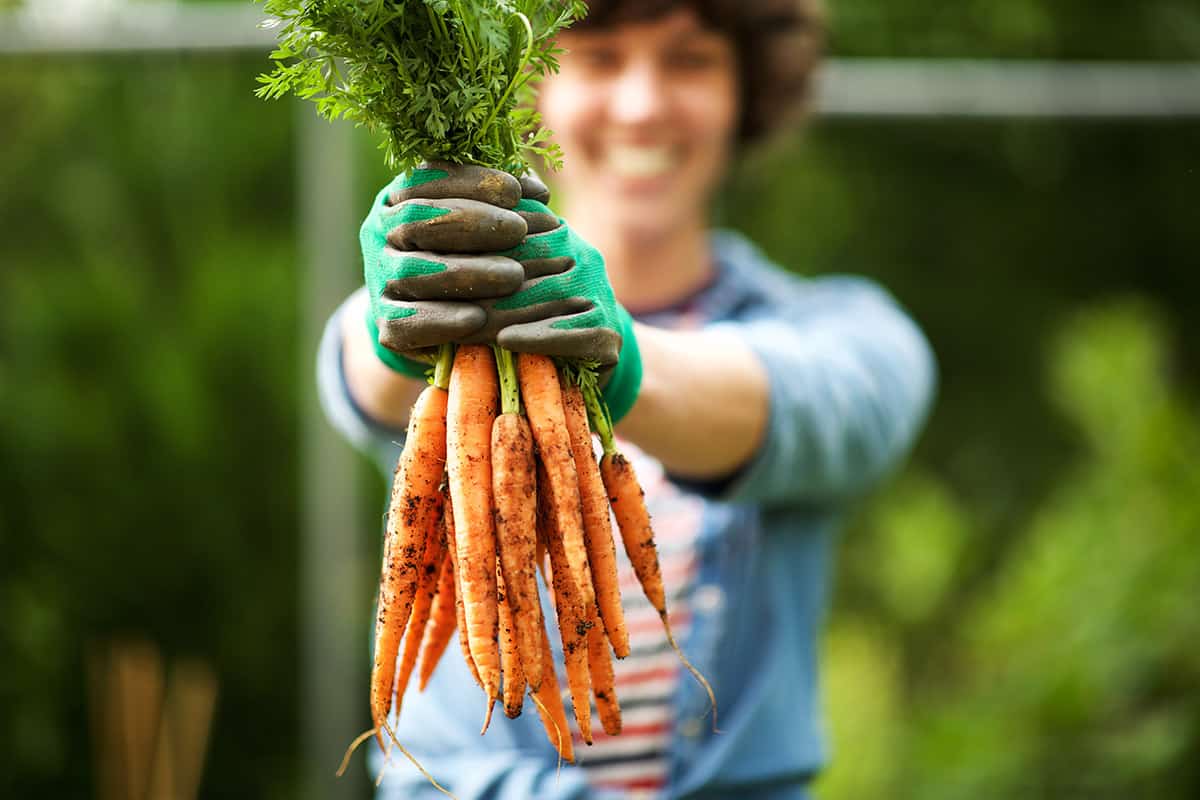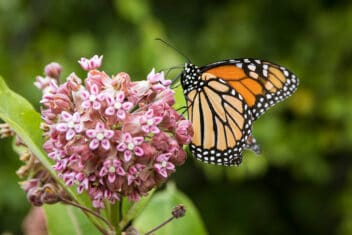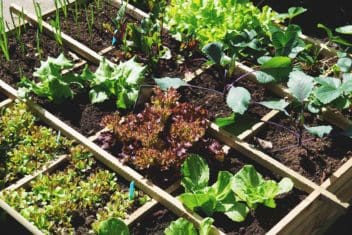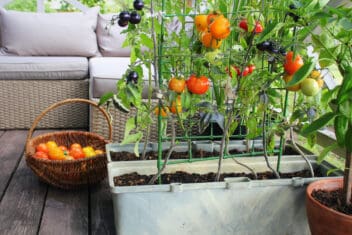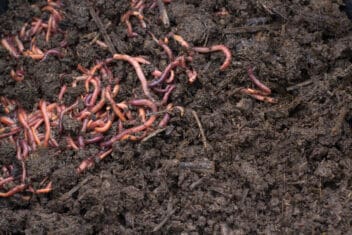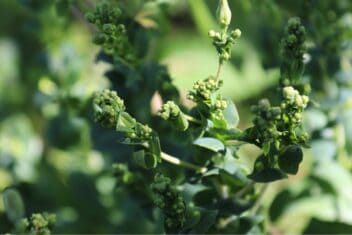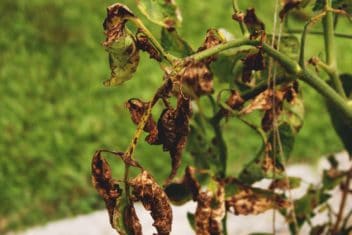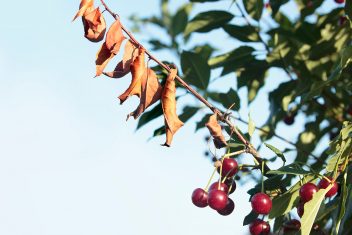Carrots are one of the most nutritious vegetables gardeners can grow in their garden, but some people shy away from growing them because they think it’s too hard to get a lot of healthy roots. Or maybe you know how to grow carrots successfully, but you’re wanting to really increase how many you get each harvest.
With these tips, you’ll not only be able to succeed at growing them well, but you’ll get a bigger harvest than ever.
Here are some of my best tips to increase your carrot harvest.
10 Tips for Growing a Huge Carrot Harvest
It took a few years for me to figure out how to increase my carrot harvest. Our family uses a lot of them, and now we enjoy having tons of home-canned and frozen carrots in the winter. Over time, I learned what makes the difference between a ho-hum harvest and an abundant one.
Once you implement the steps below, you’ll likely have a huge carrot harvest year after year. These tips made a huge difference in my garden, and I’m sure they’ll help yours as well. Soon, you’ll have more carrots than you know how to use!
1. Know When to Plant Carrots
Carrots germinate and grow best in cooler weather. These crops are considered cool-season crops, but if you plant them later in the year, they overlap with the warmth of summer.
The best time to plant carrots is three to four weeks before the final frost date in the spring in your region. Since they’re frost-hardy, you don’t have to worry about the cooler temperatures reducing growth. The seeds germinate best when they’re in temperatures around 55°F.
If you want to grow carrots as a fall crop, they’re best planted 60-70 days before the first frost date in your region. That means they have to germinate in warmer temperatures, but if you use the next tips, the germination rate should still be high.
2. Work The Soil A Lot
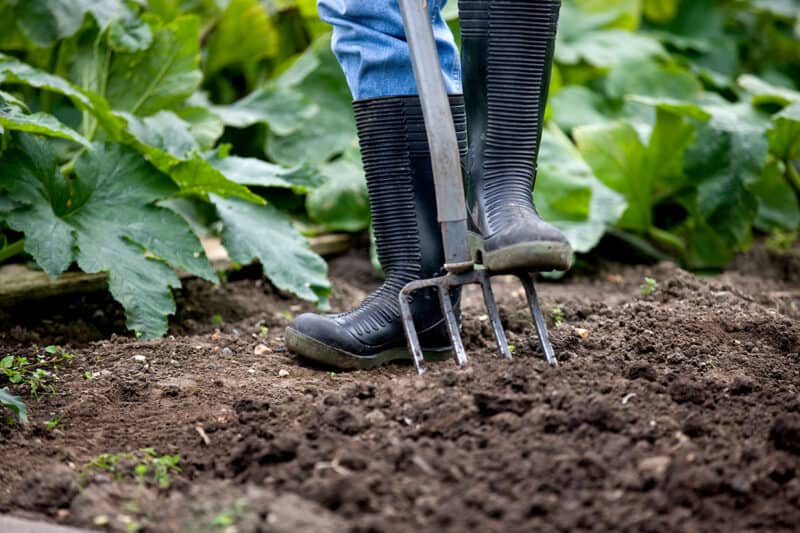
Before you plant carrot seeds, working the soil is a must if you want a huge carrot harvest. What do I mean by work the soil? Let me explain.
Carrots grow best when the soil is fluffy and non-compacted; 12 inches deep is ideal for growth. Make sure all large clumps of dirt are broken apart and remove all rocks or sticks that might interfere with the growth of your carrots.
Since carrots are root crops, they need fluffy soil to grow downward without any restrictions. Compacted soil or objects blocking their way will cause deformed or stunted veggies. No one wants that!
While some people till their soil, it’s controversial because tilling breaks apart valuable ecosystems. Another way to work the soil is to use a broad fork and work your soil over several seasons. That takes planning, but it’s better for your soil.
3. Don’t Plant Carrot Seeds Deeply
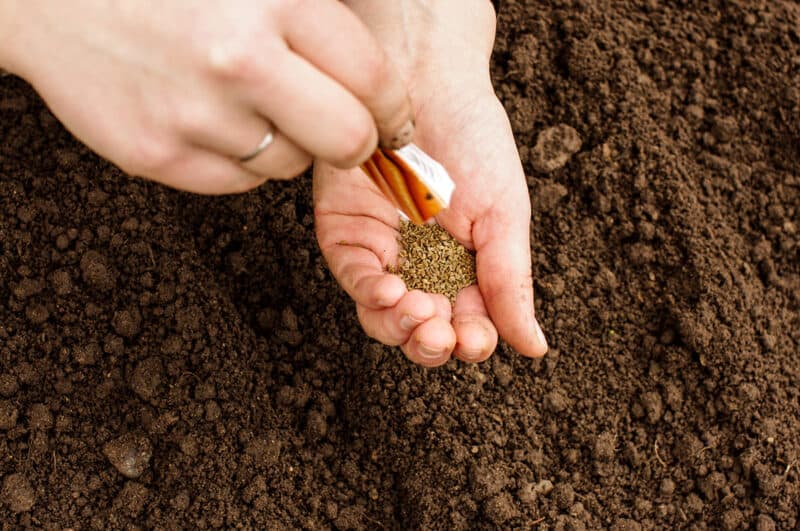
Growing carrots is a bit different than most other vegetables because you don’t want to plant them deep into the ground. Carrot seeds are tiny, and they only need to be planted 1/4″ in the ground at most.
The best way to sow carrot seeds is to make a shallow trench with your fingertip, simply making an indent to show you where the seeds need to be placed in a line. Then, cover the seeds with a thin layer of soil. That decreases the risks of disrupting the seeds and accidentally planting them too deeply, preventing proper germination and growth.
4. Use Pelleted Carrot Seeds or Space Appropriately
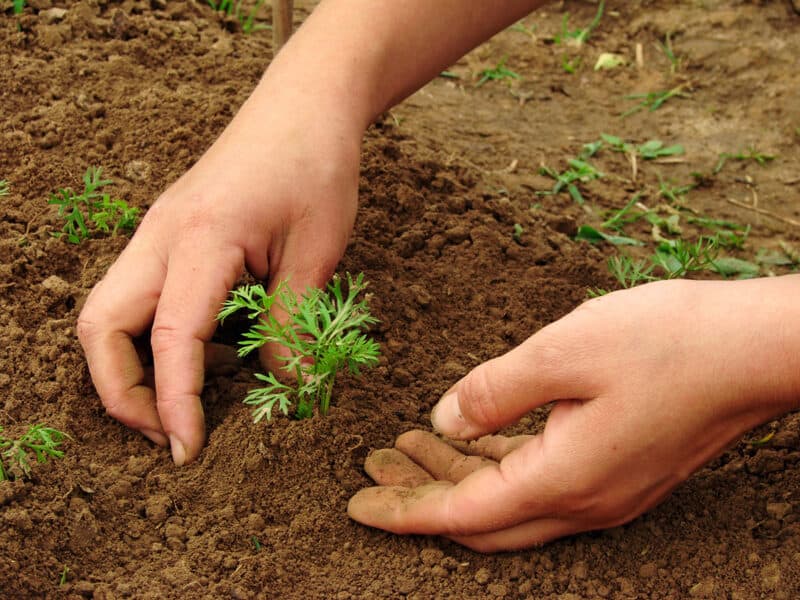
Let me tell you a secret – I hate thinning seedlings – but if you want to increase your carrot harvest, then you have to thin them to give the roots space to grow.
This year, I found a new trick that makes life a lot easier – pelleted seeds.
Pelleted seeds are essentially coated seeds and they make spacing a lot easier. If you’ve ever tried to space typical carrot seeds, you know getting the right distance apart feels impossible. Carrots should be planted two to four inches apart.
If you can’t get those seeds spaced appropriately, you’ll need to thin the plants when they’re around three inches.
5. Cover Your Carrot Rows
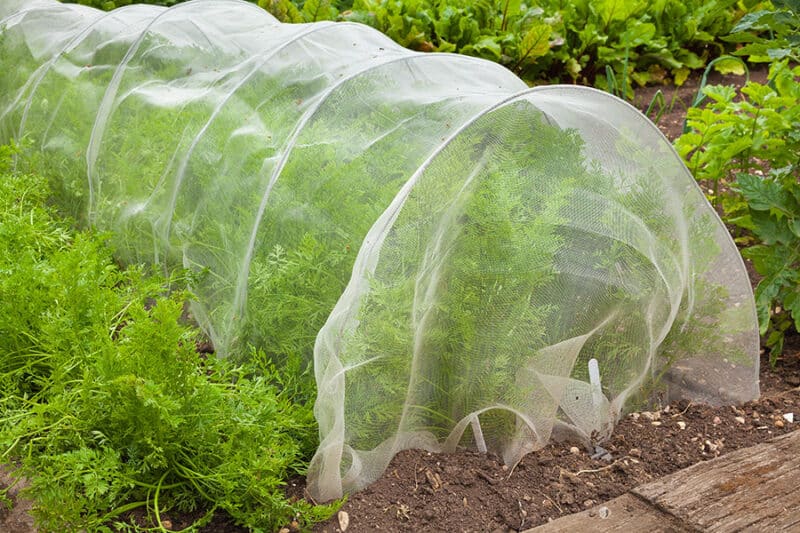
Trust me on this one – it sounds like a lot of work, but you should cover the rows after you plant your carrot seeds. Carrot flies are a serious pest for these crops, and covering the plants is a valuable preventative measure.
Skip the carrot flies if you want to increase your carrot harvests!
6. Water, Water, and More Water
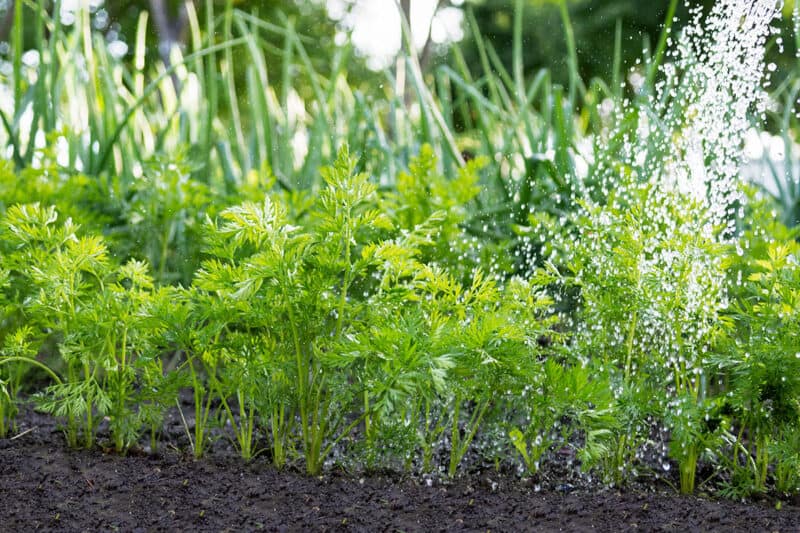
One of the most important tips for a huge carrot harvest is to water your carrots more than you think you need to. Watering is particularly important when germinating carrot seeds, which takes up to three weeks. These seeds are slow to sprout and they need a ton of water.
Without enough water, carrots will refuse to germinate and the adult plants won’t grow big. I water my carrots daily, sometimes two times per day. I’ve found that the more I water them, the better they grow. This is only true if you have properly draining soil. Make sure you have no standing water or soggy ground that might cause rotting.
7. Weed Regularly Then Mulch
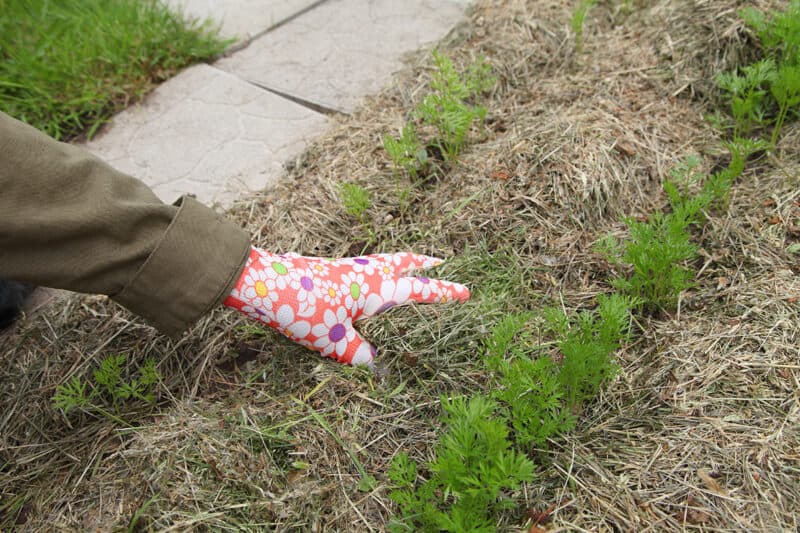
Weeding around your carrot plants regularly is another valuable tip for ideal carrot growth. Weeds compete for nutrients in the ground, and your delicate carrot plants cannot handle the competition.
Take time regularly to weed around your plants. Keeping weeds away helps your plants start off on the right foot.
After the plants are three to four inches tall, it’s a great time to mulch around your plants. Mulching helps for several reasons. Not only does mulch help to suppress weeds that compete for nutrients, but mulch also helps to retain much-needed moisture in the soil.
8. Make Sure You Fertilize
Everyone knows that plants such as tomatoes need to be fertilized, but it’s easy to forget that carrots must be fertilized as well.
When your carrot greens are around three to four inches tall, it’s time to feed them. I fertilize after thinning since I don’t want those plants I’m pulling to take any of the valuable nutrients.
Pick a fertilizer that contains little to no nitrogen and more potassium and phosphorus. A 0-10-10 or a 5-15-15 fertilizer is ideal. If you give your plants too much nitrogen, they’ll continue to produce tons of greens without focusing on root growth, which is not what you want.
The second time you should fertilize is when the carrot tops are six to eight inches tall, especially if they start to pale in color.
9. Start Randomly Harvesting Around 70 Days
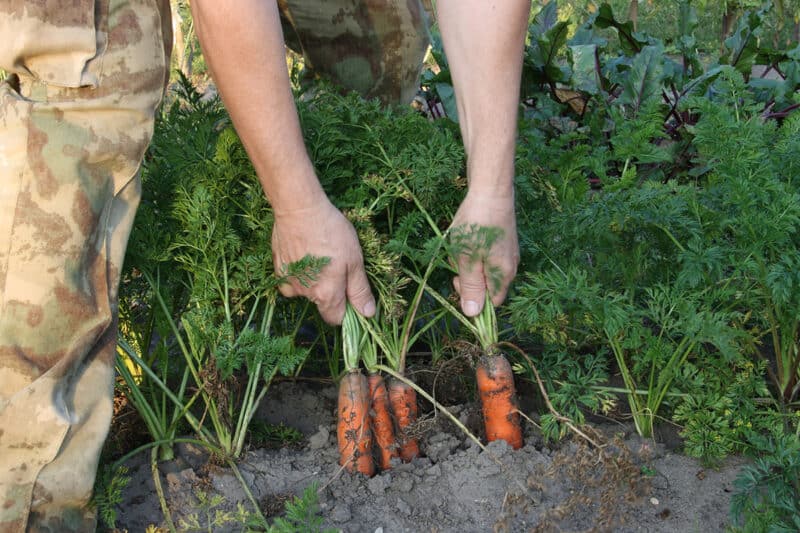
I find that most carrots need longer than their seed packets say they need to reach maturity, but your garden might be different. The best way to determine if your carrots are ready for harvesting is to randomly harvest a carrot every few days starting at the date that your seed packet says they should be ready.
When you see that the carrots are the size that you want, pull them. Waiting too long causes the carrots to have a fibrous texture that’s unappealing.
10. Don’t Be Afraid of Frost at Harvest Time
If you grow carrots in your fall garden, don’t be afraid if a frost is on your forecast. Like several other crops, carrots have a sweeter flavor when exposed to a few touches of frost. Most gardeners like to leave these veggies in the ground for a few frosts before harvesting.
You’ll be surprised at the flavor difference! So instead of running to pull your carrots, let them mature a bit longer to increase your harvest.
